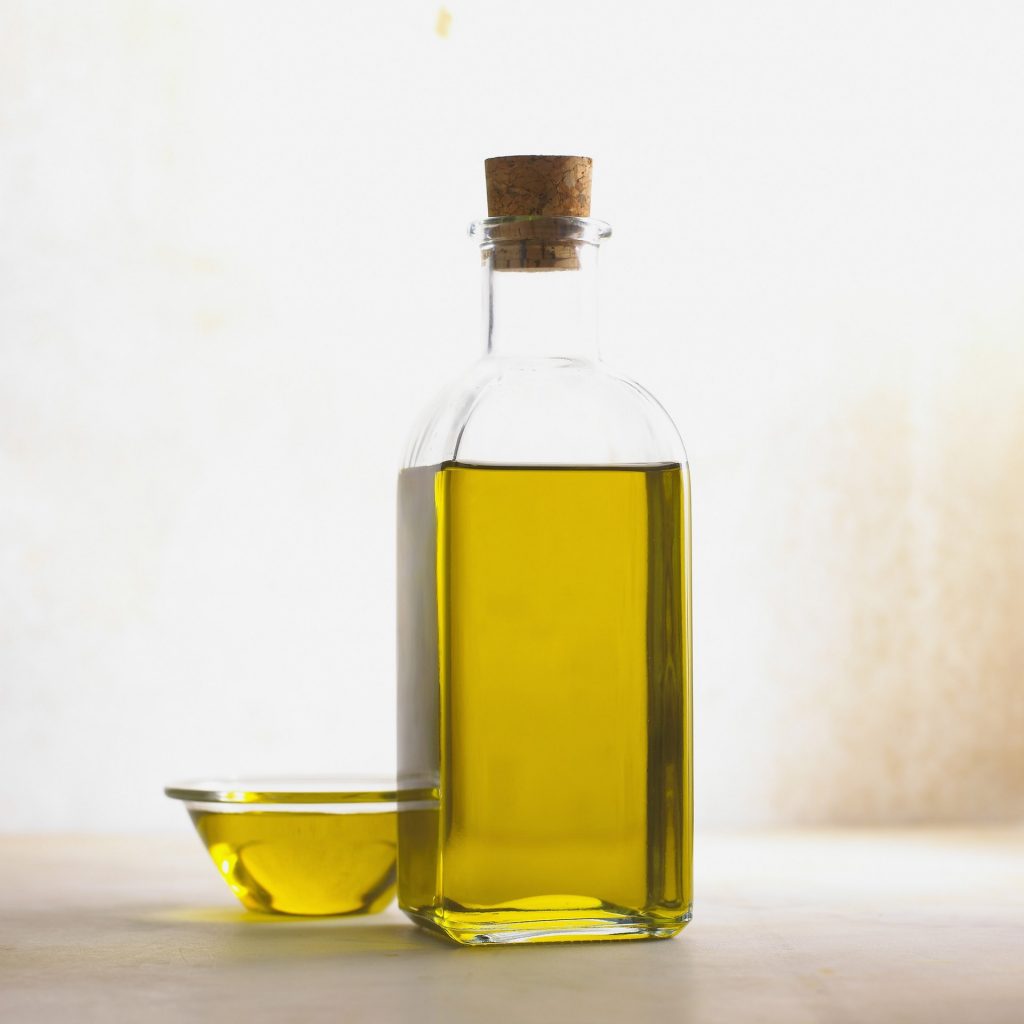Regular C60 Dosing Evaluation Summary:
This may be, where at least, some of the Regular C60 dosage recommendations, speculation, and confusion of the Batti mice study were generated.

For website marketing purposes, with only one published report in the Baati study available, priority for dosing considerations for people, was to adhere to the information presented from that report, including dosing quantities and mixing procedures.
The primary two variables explored by different marketers was choice of medium (solvent) that might include alternative oils (lipids) besides olive oil and the nature and degree of mixing the oil with Regular C60.

The assumption is that the absorption through the gut and distribution in the body of Regular C60 orally ingested might depend on the choice of oil carrier. Furthermore, different oils manifest C60 in different colors. Although a most appealing nature in regard to sales, it is pure fiction with respect to C60 purity, but perhaps possessing some differences in regard to the absorption of C60 into the body.
Besides choice of oil and nature and degree of mixing facing the marketers, considerations were of high concern as to how to properly assess the comparison of the weight of the rat compared to the weight of the self-tester and determining the dosage for a self-experimenter.
Some pursued what is now known as the Baati study-based dose conversion for humans, based on weight, while others proceeded with what is called “allometric scaling.”
So, let’s get down to the nitty gritty of the Baati lab research study: Three groups of 6 rats (10 months old, weighing 465 +/- 31 grams) were administered oral doses consisting of 0.8 mg of C60 carbon dissolved in 1ml of olive oil. This dosing regimen was conducted daily for one week, then weekly until the end of the second month and then every two weeks until the end of the 7th month. The total duration of C60 administration was 9 months and 1 week.
The median weight of the rats was 0.465kg or 465mg (less than half a kilogram, approximately a pound each). The dose per kg of rat weight was 1.72mg or about 2mg/kg that is worth considering as the animals eventually approached an average weight of 600g or 0.6kg over the duration of the testing.
The rats were weighed before each dosing but it does not appear that the individual doses were adjusted per weight accordingly. Over the entire lifespan, these subject animals were given a total of 24 doses of 0.8mg of Regular C60 for a total of 19.2mg to achieve the reported results on toxicity and longevity.

Because of the varied and limited amount of Regular C60 recommended in the Baati study, one would expect the marketing firms to convert the dosage with regard to the weight of ‘humans’ and thus one would presume that these converters would choose to use calculations like those based on the FDA’s Guidance for Human Equivalency Dosing (HED) or estimating the Maximum Safe Starting Dose (MSSD) used in clinical trials for therapeutics in adult healthy volunteers.
For example, this would equate to a 170lb. (77.11kg) man having a human equivalency dose of about 61.7mg per dose for a total of 24 doses over 9 months which means he would have consumed about 1480mg of Regular C60 over 9 months, following Baati’s protocol to theoretically achieve the same effect.
There are many factors, however, that can affect actual absorption, tissue levels, and metabolism of different fullerenes when consumed orally. It is assumed that emersion in an oil is a primary pathway for GI absorption. If true, then taking fullerenes with a fat-containing meal would benefit absorption as well.
Absorption is accomplished as bile salts and pancreatic enzymes break down the larger groups of fat and oil globules containing sequestered fullerenes into smaller groups of fatty acids called micelles which are transported through the lymph system and blood stream to the liver.
Obviously, individuals with problems absorbing fats, such as those whose gall bladders have been removed, will have difficulty absorbing fullerenes by this pathway. They very likely would need pancreatic and bile acid supplementation to help this situation.
There are also proposals of other absorption pathways. Undoubtedly, much future research is indicated on this issue. Nevertheless, it is helpful to know about an oil connection to fullerene absorption when evaluating fullerene products as one considers recommended effective dose levels.

If a self-experimenter followed the Baati testing regimen faithfully weighing 170lbs (77.11kg), he/she would be expected to be taking an equivalent amount of the Regular C60 carbon molecule of 61.69mg per dose. So, how could such be achieved taking the 0.8mg doses that is being advertised by pretty much all of the Internet marketers selling the Regular C60 mixed in some form of lipid(oil)?
Many websites seem to be silent as to a true reading of just how much Regular C60 carbon fullerenes are used in each recommended dose. The emphasis seems to be on the number of milliliters of lipids (oils) that is used as the carrier, but very little is mentioned as to the number of milligrams of the Regular C60 carbon that is mixed with the lipids (oils).
To determine the correct amount of Regular carbon C60 fullerenes that are in the dosage, the actual intake of the Regular C60 carbon must be measured in milligrams not in milliliters.
Additionally, the focus of the marketers seems intentionally focused on the results of the French rat study of a 92% increase in longevity without fully apprising the self-experimenter of the at least fifty-fold deficit in dosage.
Even though the following information does not fully clarify how the set dosage (0.8mg) had been determined by the marketers, this is being submitted in way of trying to explain possible reasons for this determination:
If one did not follow the FDA’s recommended MRSD rat to human correction factor of 0.162, one would simply multiply 1.72mg x 70kg = 120.4mg (or 2mg x70kg-140mg/kg). To make the MRSD correction one would multiply 120.4mg x 0.162 = 19.5mg or 140mg x 0.162 = 22.6mg, or one would use about 20-23mg as a safe starting dose according to the FDA guidelines. The provided dosage by the marketers of 0.8mg per milliliter of Regular C60 in oil is thus 3.5% to 4% of FDA guidelines.
Another, unrelated test was conducted where a 4mg/kg dose was given by intraperitoneal injection, not by oral gavage to rats. A much later paper, however, usesthis dosage (4mg/kg) to achieve life extending benefits safely; additionally, these rats were also given a more frequent dosing with a resultant much greater total dose per rat.
There are also toxicity study reports that indicate that a dose of 1000mg/kg for 30 days produces no significant adverse effects in rats. In the Batti testing, there were only 24 doses given to rats to produce life extension and tumor suppressive effects amounting to a mere 19.2 mg per rat (or about 40-44mg/k)
